
Laura Glesby Photo
Barbara Vereen and Claudine Wilkins-Chambers debate speed bumps as Steve Winter ponders crosswalk distances.
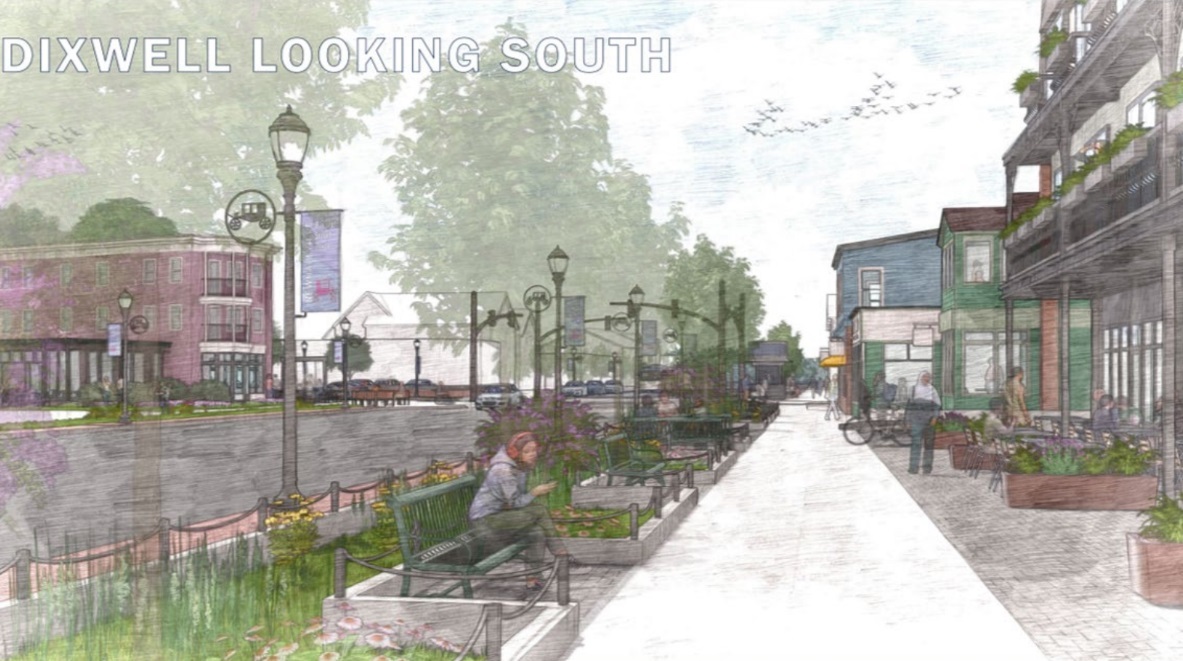
City of New Haven image
A rendering of what the "Dixwell Reconnection Projet Plan" could bring.
The future of infrastructure in Dixwell and Newhallville might look like speed tables, crossing lights, and hints of jazz in metalwork echoing New Orleans’ French Quarter.
Fifty people filled the Q House’s Toni N. and Wendell C. Harp Historical Museum Thursday evening to hear how two grants could make that future a reality — and to weigh in on the changes they want to see in their already-changing neighborhoods.
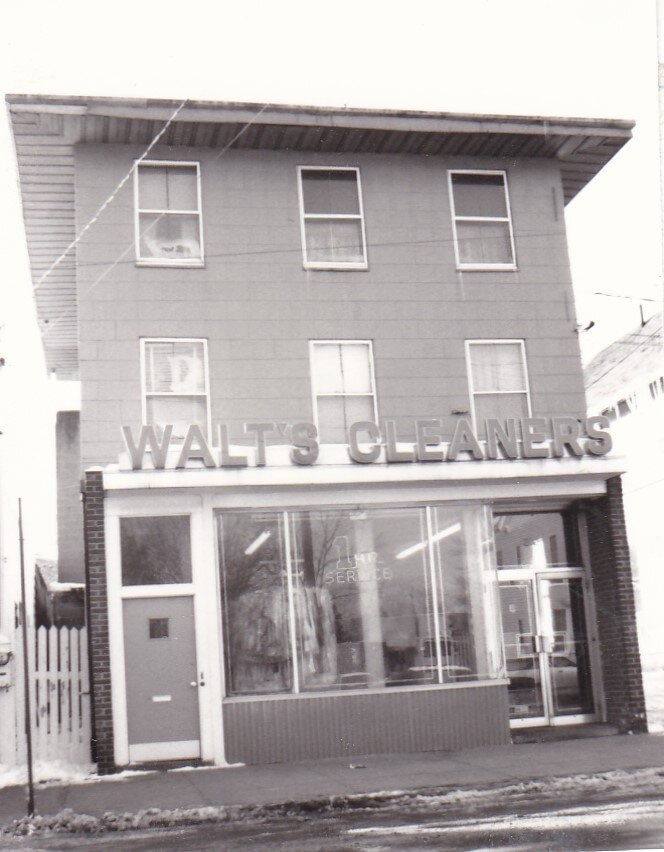
New Haven Preservation Trust
How can infrastructure remember Dixwell and Newhallville history?
The meeting had been convened by Dixwell and Newhallville Alders Jeanette Morrison, Troy Streater, Brittiany Mabery-Niblack, and Kimberly Edwards.
Over the course of the meeting, City Engineer Giovanni Zinn and Economic Development Officer Malachi Bridges presented on two separate funding pools that could propel infrastructure upgrades to Winchester Avenue and the streets surrounding Dixwell Avenue.
One is a $10 million Community Investment Fund grant from the state, for which the city plans to apply to upgrade the side streets surrounding Dixwell Avenue. Dixwell Avenue itself is not currently part of these plans, according to Bridges, because the state is planning to separately invest in upgrades to that street. The side street improvements are meant to complement those investments.
Meanwhile, Zinn has applied for a grant from the South Central Regional Council of Governments (SCRCOG), which is expected to range from $2 to $3 million, to promote safer driving, biking, and walking along Winchester Avenue.
The grant applications are part of a broader effort among city officials and neighborhood leaders to infuse more resources into Dixwell and Newhallville, neighborhoods that have historically been a hub of Black commerce, art, and labor organizing in New Haven.
Dixwell Alder Jeanette Morrison noted that “in the ’60s and ’70s, Dixwell Avenue was the spot,” receiving murmurs of assent from the audience. The goal, she said, is “just making Dixwell alive again!”
While the two grants will fund an array of traffic calming measures and streetscape beautification, there are no specific plans in motion yet, as city officials said they plan to base their proposals on community input. “Nothing is final, everything is preliminary,” said Bridges.
Bridges and Zinn did present a menu of possible changes — including speed control measures (ranging from relatively abrupt speed bumps to relatively subtle speed tables and raised crosswalks), blinking pedestrian crossing lights, bump-outs to narrow crossing distances, bike lanes, planters, metalwork, benches, lighting, and more.
See Thursday’s full presentation here.
Drawing From Jazz History
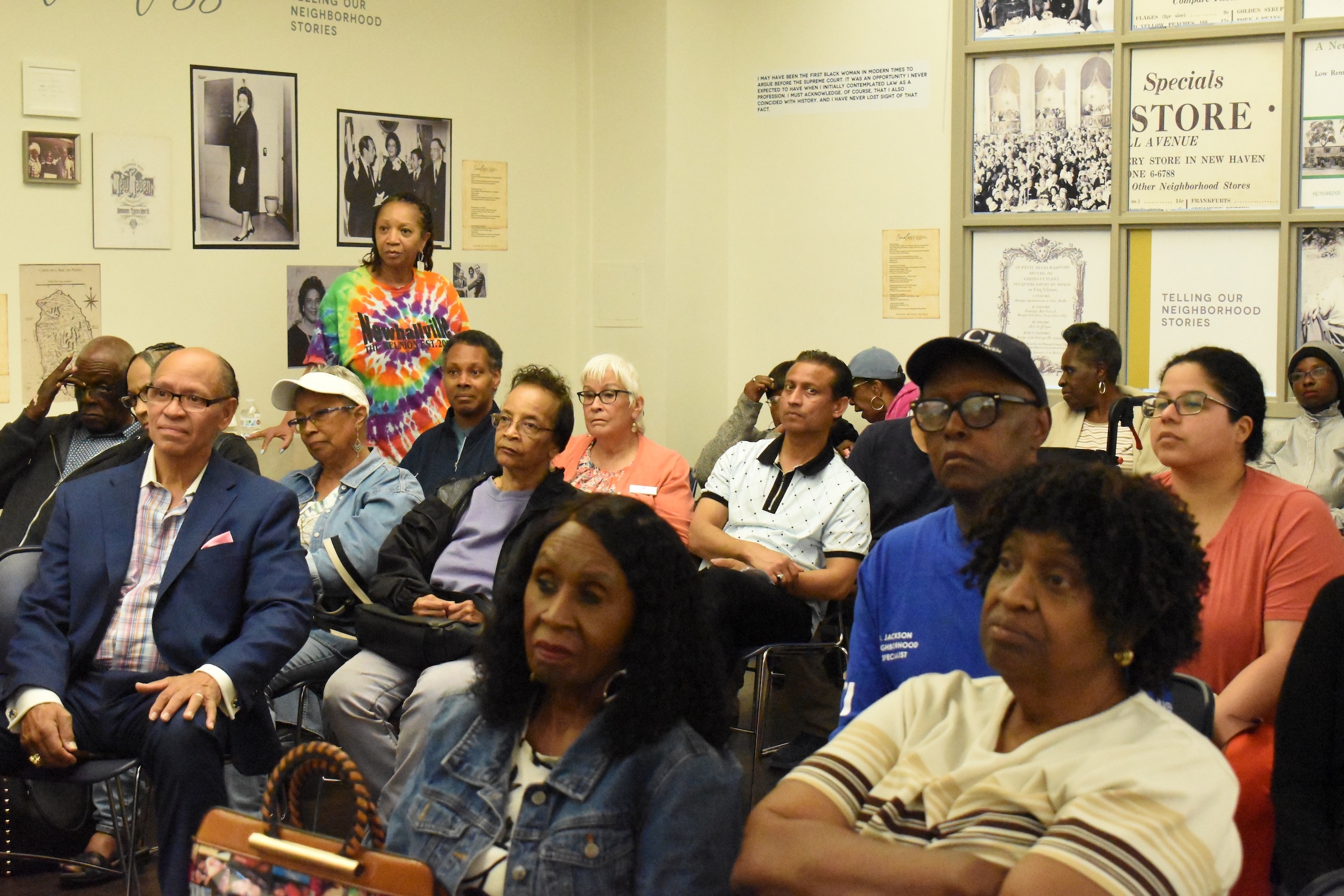
The meeting unfolded inside the Toni N. and Wendell C. Harp Historical Museum, a room dedicated to the neighborhood's rich history.
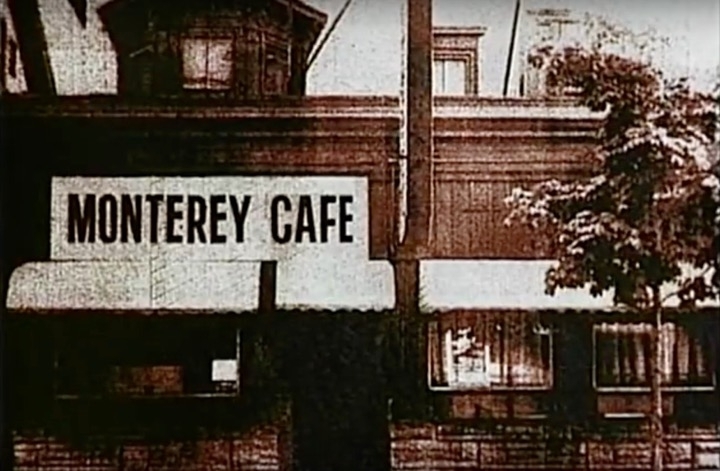
From Frank Mitchell's film Unsung Heroes
The historic Monterey Club.
Bridges pointed to Dixwell Avenue’s history as a hub of jazz in New Haven, where venues like the Monterey Club once hosted giants like Billie Holiday, Josephine Baker, and John Coltrane. After decades of neglect from property owners, that historic club is now deteriorated and uninhabitable, and city plans to acquire the building from Ocean Management fell through.
In Bridges’ eyes, the CIF grant is an opportunity to rebuild elements of the neighborhood’s artistic history into the very design of the street. “If it were up to me, and everyone agreed, I would want it to look like the French Quarter in New Orleans” to honor that history of jazz, he said — with ornate metalwork adorning benches, bike racks, and trash cans, and with asphalt stamped to resemble a cobblestone street.
“We really want to infuse the love of Newhallville” into the streets’ design, said Bridges. “We’re trying to reclaim that history into a moment of now.”
Slowing Down Winchester Speeding
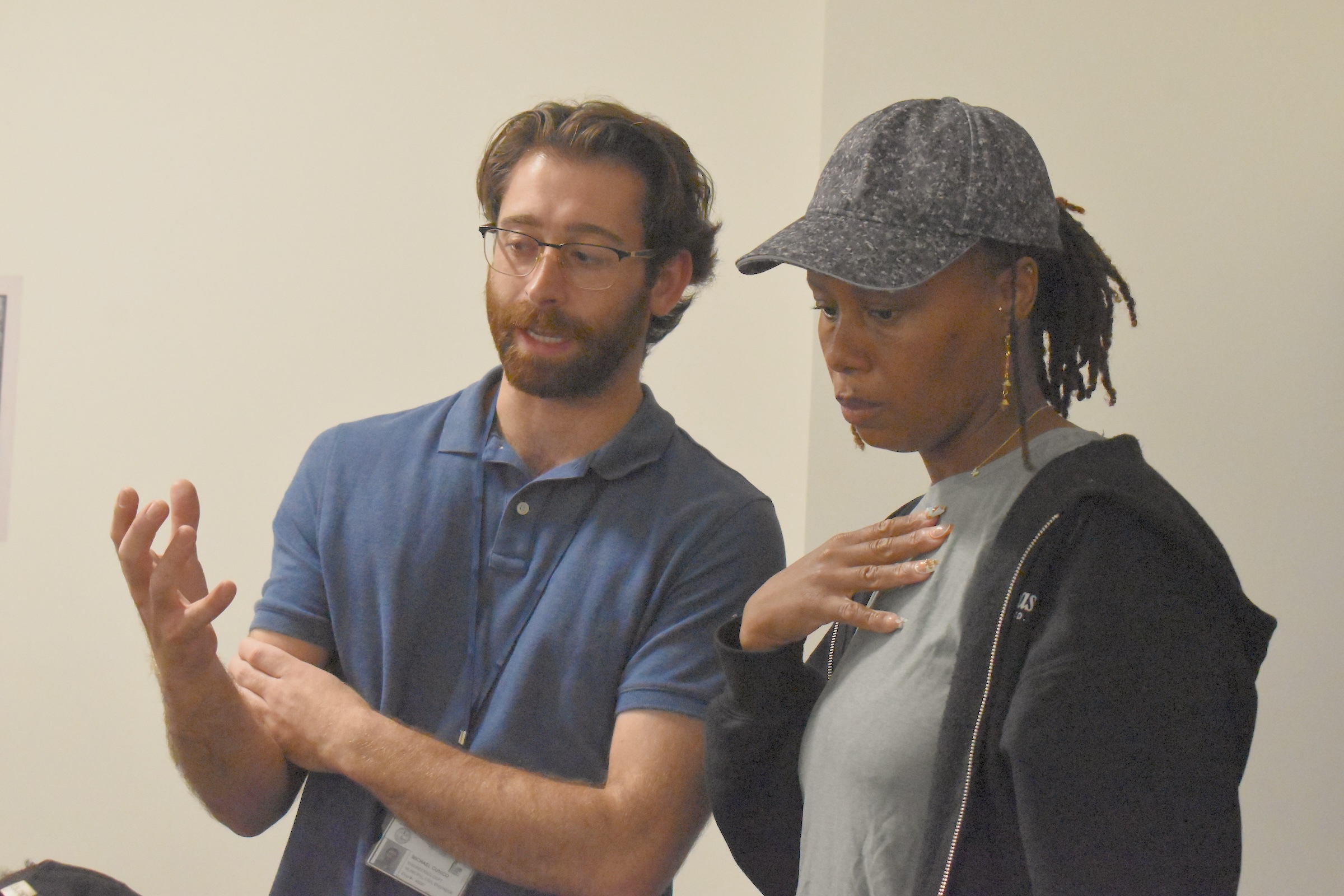
Engineer Michael Cunico and resident Stacy Leslie discuss speed tables, bus shelters.
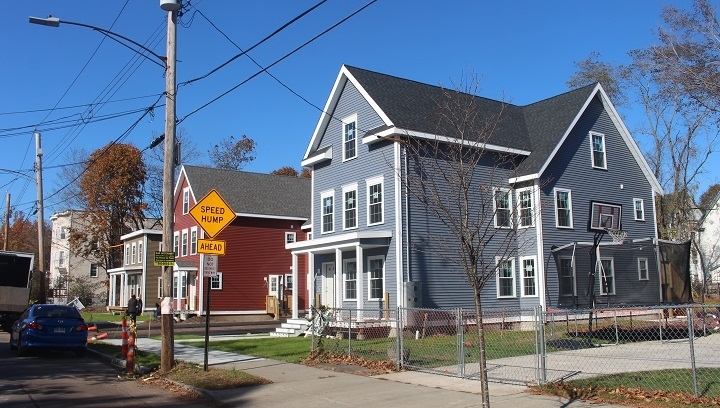
Thomas Breen File Photo
There's already a speed hump by Winchester and Thompson.
While Bridges remained through the meeting to hear community feedback on the Dixwell proposal, the primary focus of Thursday’s meeting was the Winchester Avenue grant.
“We might be the engineering experts, but you guys are the experts on Winchester Avenue,” said Zinn.
Zinn and his team laid out massive aerial satellite maps of Winchester Avenue across several long tables and asked attendees to cover the map in post-its with suggestions.
Participants eagerly jotted down nuts-and-bolts requests. Among the popular suggestions were additional lighting on the Farmington Canal Trail and anti-speeding measures throughout Winchester Avenue.
State Rep. Steve Winter jotted down the need to shorten the crosswalk distance where Winchester meets Munson Street.
Along one block of Winchester between Huntington and Lilac, post-its called for a “bike lane,” “sidewalk grass,” and “flowers down the whole street.”
As the post-its accumulated, so did conversations about how the streetscape upgrades would coincide with broader changes as the neighborhoods see an influx of luxury and mixed-income development.
Winchester Avenue resident Stacy Leslie noted down a section of the street near Hazel that tends to flood when it rains. “The drain here is backed up,” she said, pointing to how the water forms a giant puddle impacting a cluster of four houses. When it’s cold enough, the street can become icy. She wrote “Drainage here for Winchester” on a post-it note by the flood source, with arrows in four directions.
“We have a bus stop,” she added, pointing down the block. “It’s a lot of older folks, and there’s nowhere for them to sit.” She requested a bench and some form of bus shelter for the block.
Leslie said she has mixed opinions on the prospect of speed bumps along the avenue. “We don’t have that much speeding during the day,” she said, but “when 8 o’clock comes is when everyone starts to take it as a speedway.” She described disruptively loud, reckless drag racing down the street at night.
Still, “I don’t want the speed up to build up traffic during the daytime,” she said, noting the bus route along Winchester Avenue.
Civil engineer Michael Cunico pointed out that speed bumps are not the only option available for slowing cars down. The city can add speed humps, speed tables, or raised crosswalks, which produce less abrupt of a feeling for the vehicle.
The idea of a less harsh speed-calming measure seemed to resonate with Leslie.
It also caught on at a nearby table, where Newhallville residents Barbara Vereen and Claudine Wilkins-Chambers debated the impact of speed controls.
Wilkins-Chambers said she isn’t a fan of adding more speed bumps to the neighborhoods.
Vereen argued that a speed table would be beneficial, without being as harsh. She pointed to the intersection of Winchester and Huntington. “I think we can put a table here, because people fly by, people run through this stop sign,” she said, placing down a post-it note to that effect.
Fellow Winchester Avenue resident Sam Samdani echoed concerns about “the noise level plus safety” related to late-night drag racing.
“I added two speed bumps!” he declared, pointing to a Dixwell stretch of Winchester where he lives.
A Neighborhood Changes
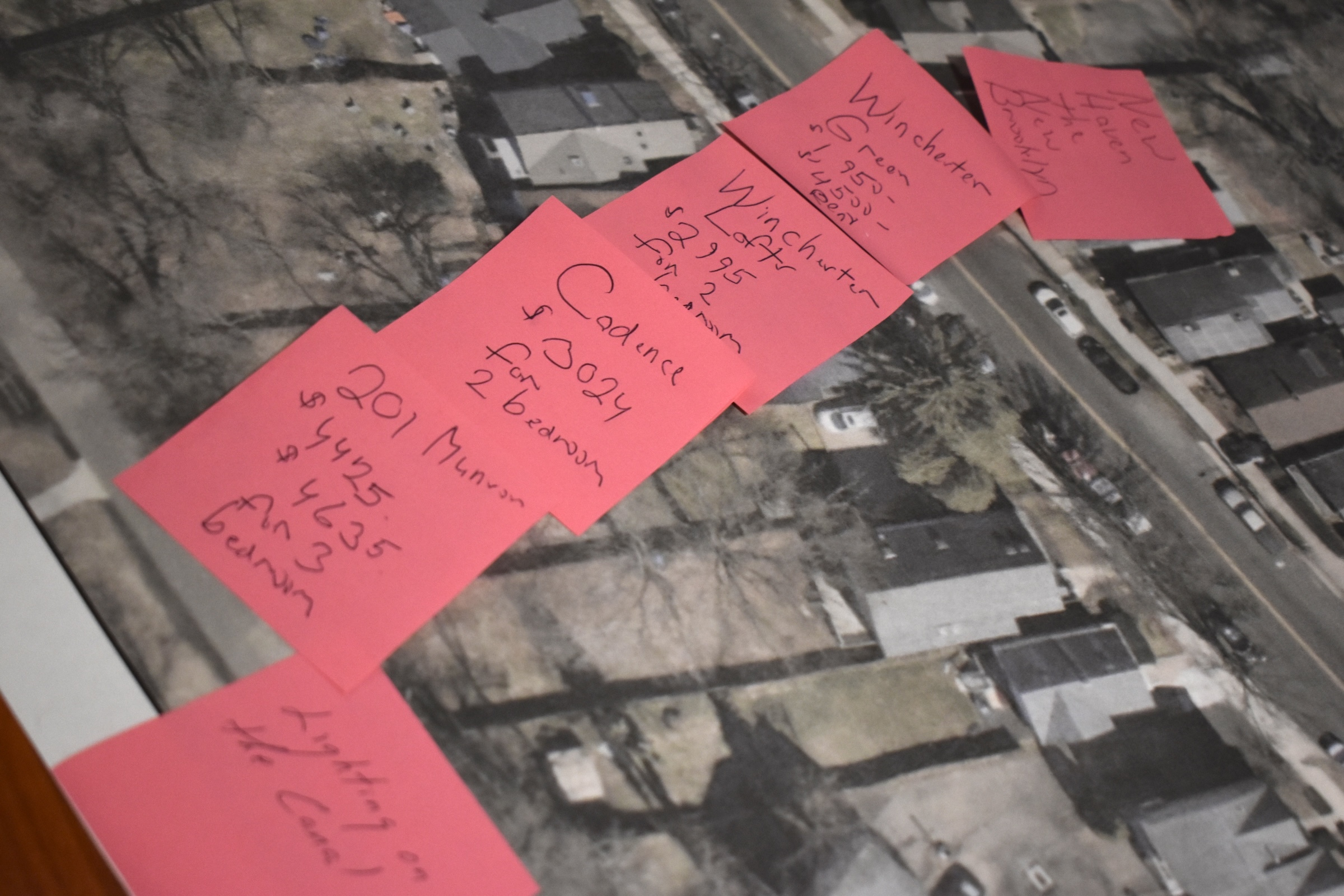
Merryl Eaton's post-its reflecting a broader context of high-rent development.
“This neighborhood is really coming up,” said Samdani, who moved back to New Haven three years ago after once having lived here as a Yale student decades ago.
Samdani, who works remotely for a large consulting firm, said he wanted to move from New Jersey to New Haven after feeling that he lacked a sense of community that felt intellectually fulfilling. He wanted to live as close to Yale as possible, he said. He chose a house on Winchester Avenue, right by Yale’s newest residential colleges. He said he’s noticed Yale students increasingly moving into the surrounding area, and expressed enthusiasm for a spate of new luxury and mixed-income housing developments nearby that he imagined could be used to house Yale students.
In Samdani’s eyes, this change is a positive one for the neighborhood. He’s interested in helping New Haven become even more of a research and intellectual hub on a broader level, including by working with Quantum CT’s efforts to bring quantum computing to the city. Samdani expressed particular excitement about a burgeoning biotech hub in the Science Park area, the former home of the Winchester Repeating Arms factory. “I want to do whatever I can,” he said, to help bring a buzzing scientific economy to the neighborhood.
Meanwhile, a contingent of advocates with Mothers and Others for Justice observed similar changes — and walked away with the opposite conclusion.
Instead of infrastructure suggestions, Mothers and Others organizer Merryl Eaton used the post-it notes to jot down the going rate for an apartment at a variety of new apartment complexes by the Dixwell-Winchester border.
“We are very, very concerned that they are building all this luxury housing” that the vast majority of existing neighborhood residents would not be able to afford, said Eaton, who works for the homeless services organization Christian Community Action. While some of the complexes have a set number of designated “affordable units,” critics have contended that they should be providing more of those units and using a more realistic definition of “affordable.” Eaton worries about residents getting priced out of the neighborhood, and about the severely limited availability of “deeply affordable housing” compared to the need she sees on a daily basis.
One Newhallville resident, meanwhile, is embracing the neighborhood changes to the point of a profound life change.
Carlota Clark said she’s planning to downsize and move to an apartment in Cadence on Canal, a sleek new building constructed with sustainable materials at the intersection of Munson, Henry, and Canal streets. Currently, a market-rate two bedroom in the 168-unit building is listed at $3,059 a month, although about a third of apartments have been set aside for more affordable rents.
“They took me on a tour, and so far, I’m loving it,” said Clark. “It has fire pits and couches! I’m ready.”
She has a parallel sense of optimism about the street changes slated for Winchester. “I saw they redid Valley Street,” she said. “It was so easy! So far, I’m loving it.”